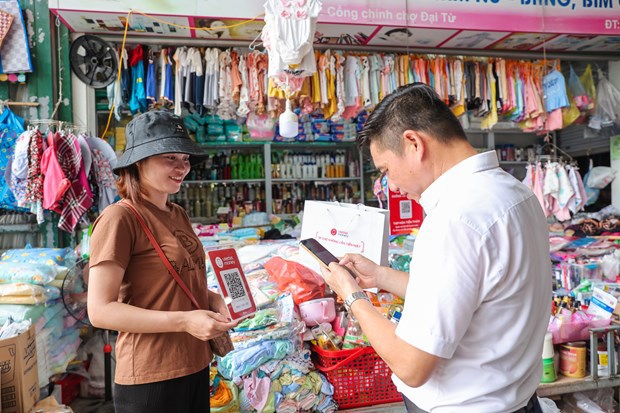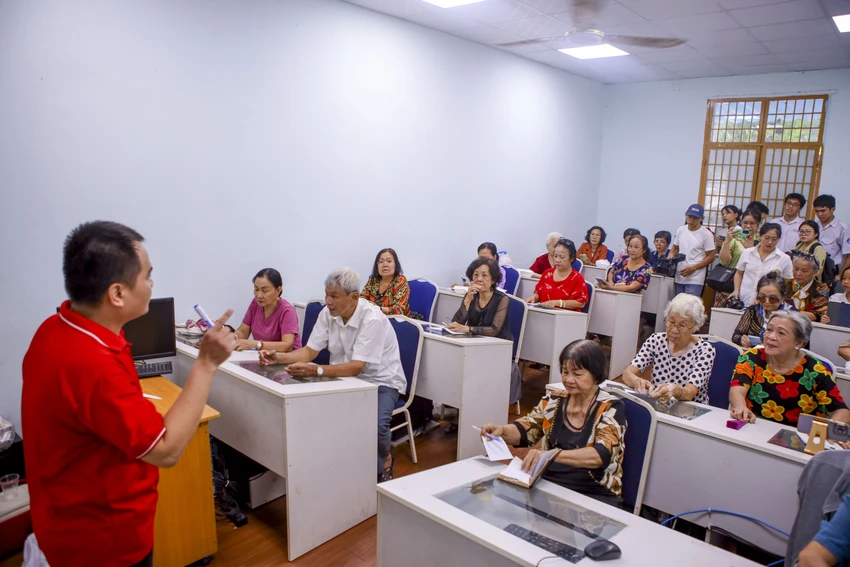From Mass Education Movement to Digital Literacy for All
The Digital Literacy for All movement is working to close the gap between those who are comfortable with digital tools and those who are not, ensuring that no one is left behind as society becomes more dependent on technology.
THE HANOI TIMES — When I think about Vietnam's Binh Dan Hoc Vu So (Digital Literacy for All) movement, it’s hard not to recall the legacy of the 1945 Binh Dan Hoc Vu (Mass Education Movement) launched by President Ho Chi Minh. The mission then was to eradicate illiteracy and provide education for all in the early years of the socialist state. Looking back, I feel proud of how far Vietnam has come. From a country where many struggled with basic literacy in the war, we’ve made tremendous progress. Now, as we enter the digital era, Vietnam is embracing a new mission of Digital Literacy for All.
The Digital Literacy for All movement is working to close the gap between those who are comfortable with digital tools and those who are not, ensuring that no one is left behind as society becomes more dependent on technology.
In the bustling capital, with a population nearing nine million, street vendors can frequently be seen displaying QR codes on their mobile phones to accept payments. Customers, often young people, effortlessly scan the code with their phones and transfer the money, embracing the convenience of digital payments.
It struck me that these vendors, who were once limited to cash transactions, are now at the forefront of Vietnam’s digital transformation. The vendors now use smartphones to navigate the complexities of digital payment systems. It’s a simple act, but it signals a profound change in how business is done in the streets of Vietnam.

A customer makes transition via QR code at a street shop in Hanoi. Photo: Phuong Nga/kinhtedothi.com
Even more striking, on a recent visit to a street market in Thanh Xuan District, I encountered a street vendor selling fish, who had a smartphone with a QR code ready for customers. As I stood in line, I overheard the vendor telling some customers how much easier it was for her to track sales and receive payments. It was heartwarming to see her empowered by technology, and it reflected the rapid adoption of digital tools by many small businesses.
However, she always keeps some cash in her bag to provide change for customers who pay with cash. "Most of them are elderly people who either don’t use smartphones or aren’t familiar with transactions through mobile wallets or bank accounts," she explained.
Sometimes, the elderly ask their sons or daughters to transfer money through their bank accounts, but it takes time to text them about the price and my banking details... it's just inconvenient," she added.
This transition, like its predecessor, is not without its challenges. As much as digital tools like smartphones and QR codes have become the norm for the younger generation, they are still daunting to some, especially the elderly.
There’s a significant challenge, one that Vietnam’s Digital Literacy for All movement is actively addressing: how do we help the elderly? The digital divide is most apparent in older generations, who, for the most part, have not grown up with the internet or smartphones.
I recall an encounter with my mom while we were waiting at a street fruit shop. I had taught her how to make payments using her smartphone, and she was eager to give it a try. However, as she attempted to use an app to pay for her fruit, she struggled. Her fingers trembled as she fumbled with the screen, and she looked at the cashier with a confused expression. After several attempts, I stepped in to help her. This moment made me acutely aware of the digital literacy gap among older people, highlighting the challenges they face in navigating an increasingly digital world.
For many elderly individuals, the concept of digital tools is not just unfamiliar. In the bustling streets of major cities like Hanoi, they face an overwhelming digital landscape where QR codes, online shopping, and digital banking are now ubiquitous. A simple transaction that most of us can carry out in seconds is a daunting task for those who have never used a smartphone or navigated the digital world. And it’s not just about payments, digital tools permeate every corner of daily life, from navigation apps to social media platforms, which they may find difficult to comprehend.
Party General Secretary To Lam recently referred the movement Digital Literacy for All, with a broad, inclusive vision. It is not just an educational initiative, but a bridge between the past and the future.
“By building on the historical lessons learned, we aim to create a society that is not only rich in knowledge but also empowered by technology, ready to integrate and thrive in the modern world,” said Lam.
The Digital Literacy for All movement, however, offers a glimmer of hope. Initiatives across the country, particularly in urban areas, are already helping older citizens overcome digital barriers. I’ve also learned from local media about volunteers in Ho Chi Minh City who patiently teach older residents how to use smartphones, covering everything from setting up banking apps to sending text messages. While these efforts may seem small, they are significant steps toward ensuring inclusivity in Vietnam’s digital future.

A training class of smartphone for the elderly in Ho Chi Minh City. Photo: plo.vn
The government’s commitment to Digital Literacy for All, through initiatives like training programs for the elderly and nationwide digital literacy campaigns, demonstrates a determination to leave no one behind in this digital revolution. The movement aims not just to educate but to ensure that every citizen, regardless of age, can harness the power of technology for their daily lives.
The Digital Literacy for All movement is an important and necessary step for Vietnam. It’s a continuation of the spirit of Binh dan học vu, but in a new context, one that acknowledges the growing role of technology in every aspect of life.
While the road ahead may still have its challenges, I believe that with the country’s focus on inclusivity and the ongoing support from various sectors, Vietnam will continue to thrive in the digital age. The goal is for a future where every citizen, regardless of age or background, can access and use digital tools to improve their lives.
And that is a future worth working toward.








